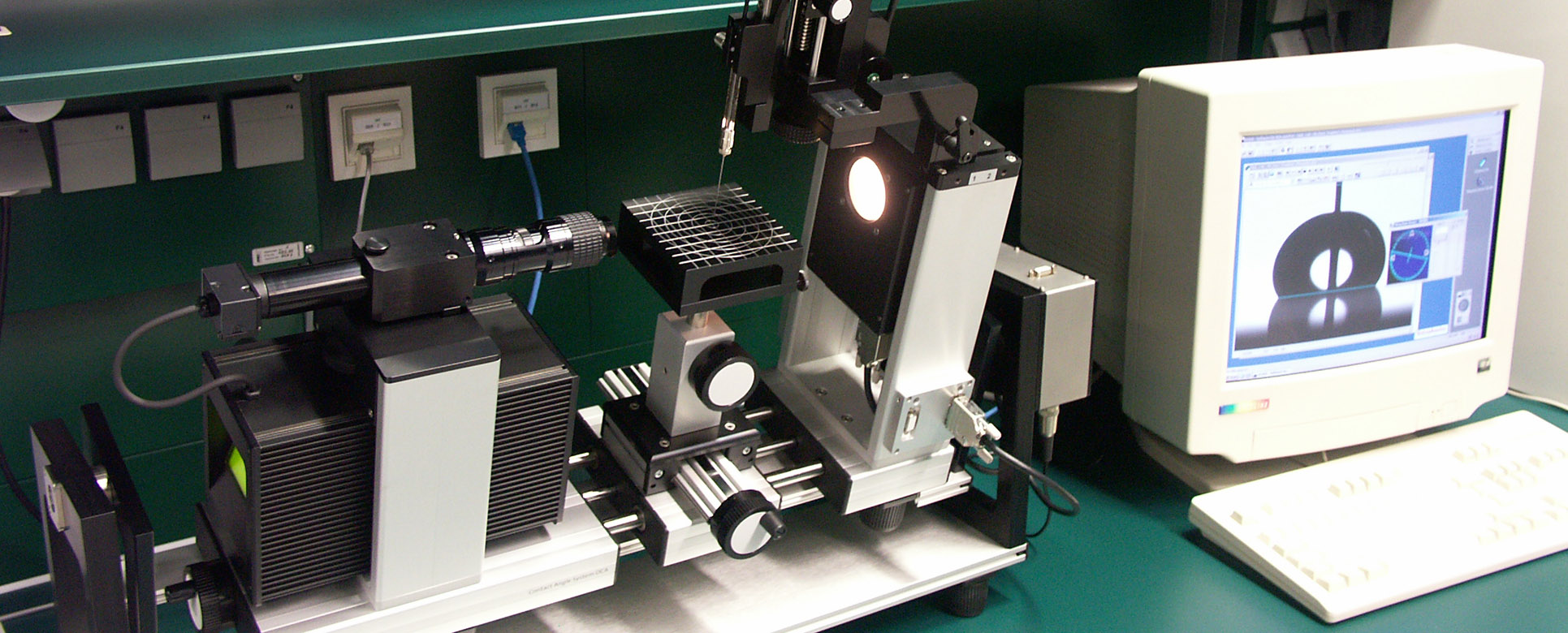The wetting behaviour of optical and technical surfaces (e.g. architectural glass, engineering components) is of great importance for cleaning processes and various applications.
Wetting properties are considerably determined by surface roughness in addition to the chemical nature of the liquid and solid. The technology for the realization of e.g. ultra-hydrophobic self-cleaning surfaces has to generate a specific surface structure.
In order to adapt the technological process and hence the wetting properties of these surfaces, knowledge about wetting relevant surface structures is important. For that purpose, a novel method for the quantification of wetting relevant surface roughness was developed at the Fraunhofer IOF. Specific roughness analysis based on power spectral density functions leads to a wetting parameter κB. Unlike simple roughness parameters (e.g. rms roughness) κB considers both the vertical and lateral dimensions of roughness structures.
Empirical correlation between the roughness and wetting properties of samples with various degrees of roughness but identical intrinsic hydrophobicity revealed that ultra-hydrophobicity is essentially associated with κB values above 0.3 (for comparison: for the well known ultra-hydrophobic lotus leave, a κB value of 0.7 was determined). Appropriate correlation between the roughness and wetting properties also requires advanced wetting characterization by dynamic contact angle (advancing and receding contact angles) and sliding / roll-off angle measurements.
The ultra-hydrophobicity of optical surfaces is necessarily based on nano-meter-sized roughness structures in order to maintain optical quality (low scatter losses). Systematic roughness design by means of the parameter κB constitutes a key to a cost- efficient technological process.
